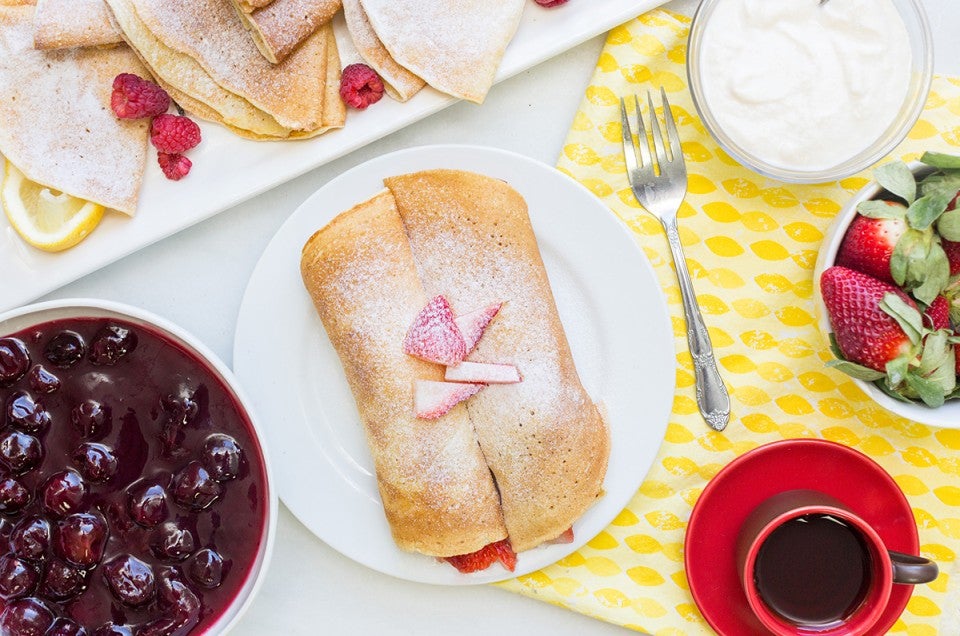


For us, the perfect special breakfast feels fancy and is easy to pull together. Crêpes check that first box — they feel like a luxury. But they aren't very quick to come together. Who wants to dig around for a specialty pan, let the batter rest for what feels like forever, and swirl a skillet to cook each crêpe one by one?
Not me, especially when I'm hungry.
Do you want to enjoy fancy-looking thin pancakes without the hassle? If you’re a pancake lover, then of course you do!
You won’t need any special pans, ingredients, or a lot of time to make lacy, thin pancakes. All you need is your favorite pancake recipe and these simple tips.
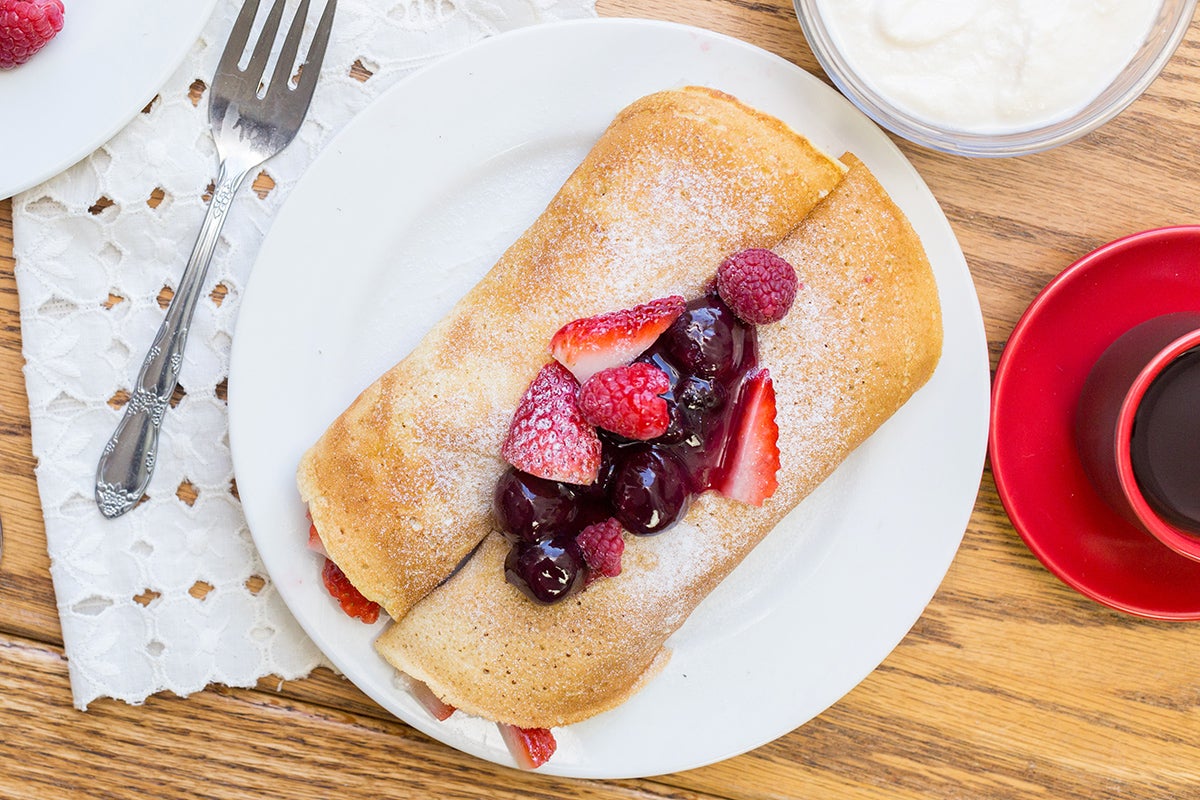
Our Buttermilk Pancakes recipe is the ideal base for customization. It can be tweaked to make all kinds of pancakes — we recently showed you how to transform it into thick and fluffy pancakes, as well as ones that are decadent and buttery. We even use this recipe to make classic diner-style pancakes.
Now we're going to use a little kitchen magic to turn Buttermilk Pancakes into melt-in-your-mouth thin pancakes that are easy to whip up any day of the week.
Use our recipe or grab your own — we’re about to make thin pancakes.
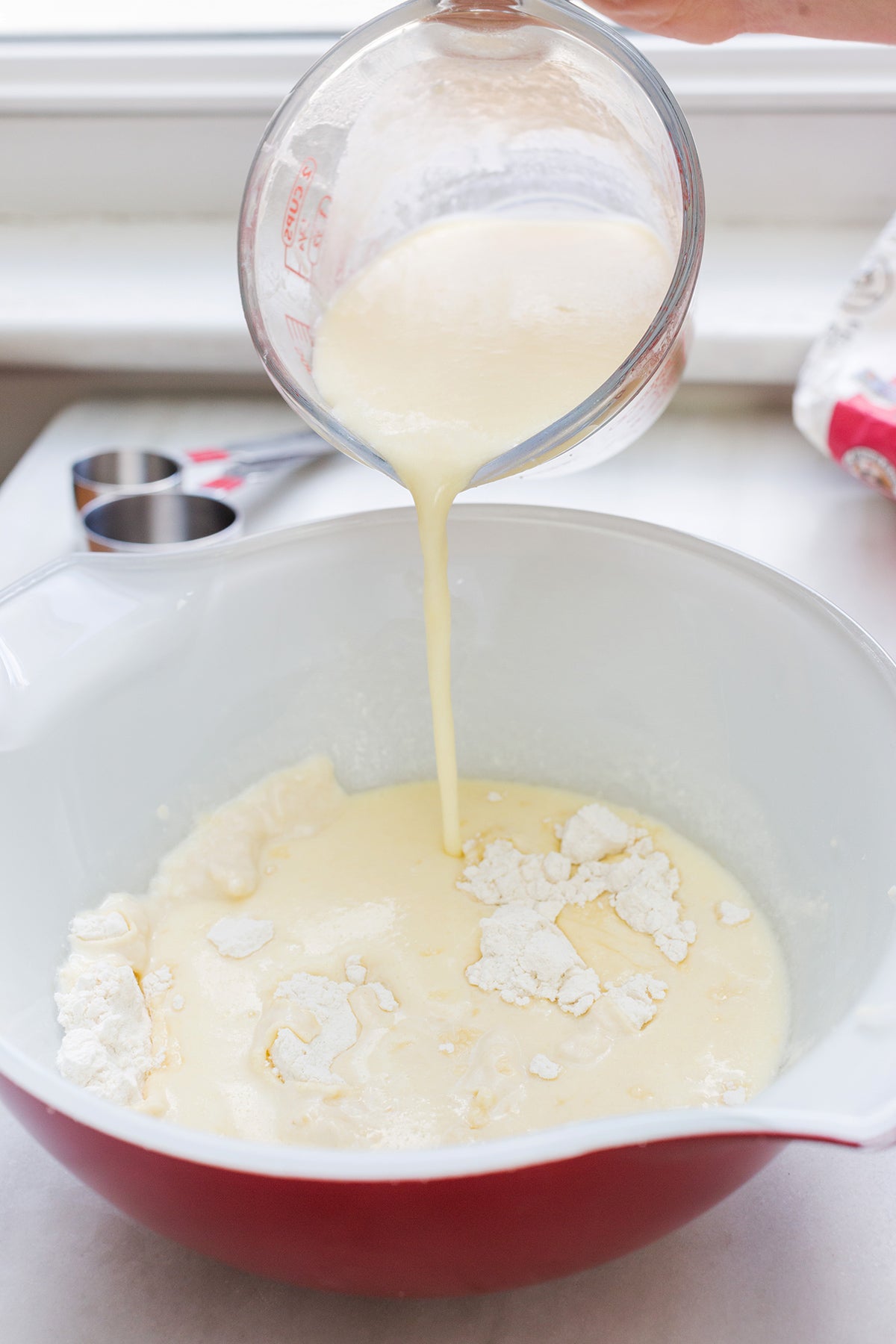
Traditionally, crêpe batter is thin and pourable. It’s full of beaten eggs and enriched with melted butter. These ingredients make the batter a consistency that spreads easily on a hot pan. It’s just right for quick cooking; sometimes crêpes only need to be cooked on one side before they’re done.
The final result is crêpes (or super-thin pancakes) that are tender and flexible. You can fold them up and serve them with lots of delicious garnishes, or even turn them into stuffed blintzes.
We’re going to make a similar style of batter; our thin pancakes will be just as delicious and versatile as true crêpes.
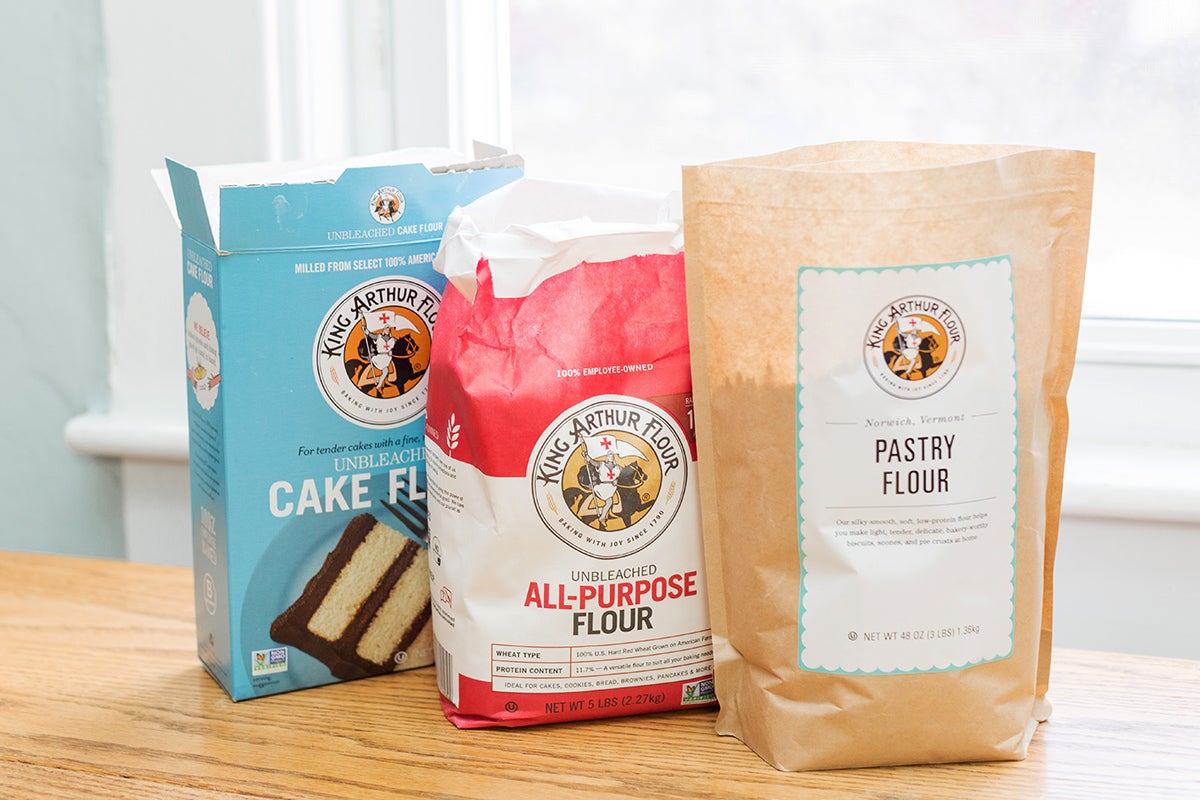
Before we dive into making pancakes, it’s worth taking a moment to consider your flour. Our Buttermilk Pancakes recipe calls for King Arthur All-Purpose Flour. With its 11.7% protein content, our all-purpose flour is medium-high in strength. This means it gives your baked goods structure — no collapsing loaves or crumbly cakes. We love it for traditional pancakes, waffles, and much more!
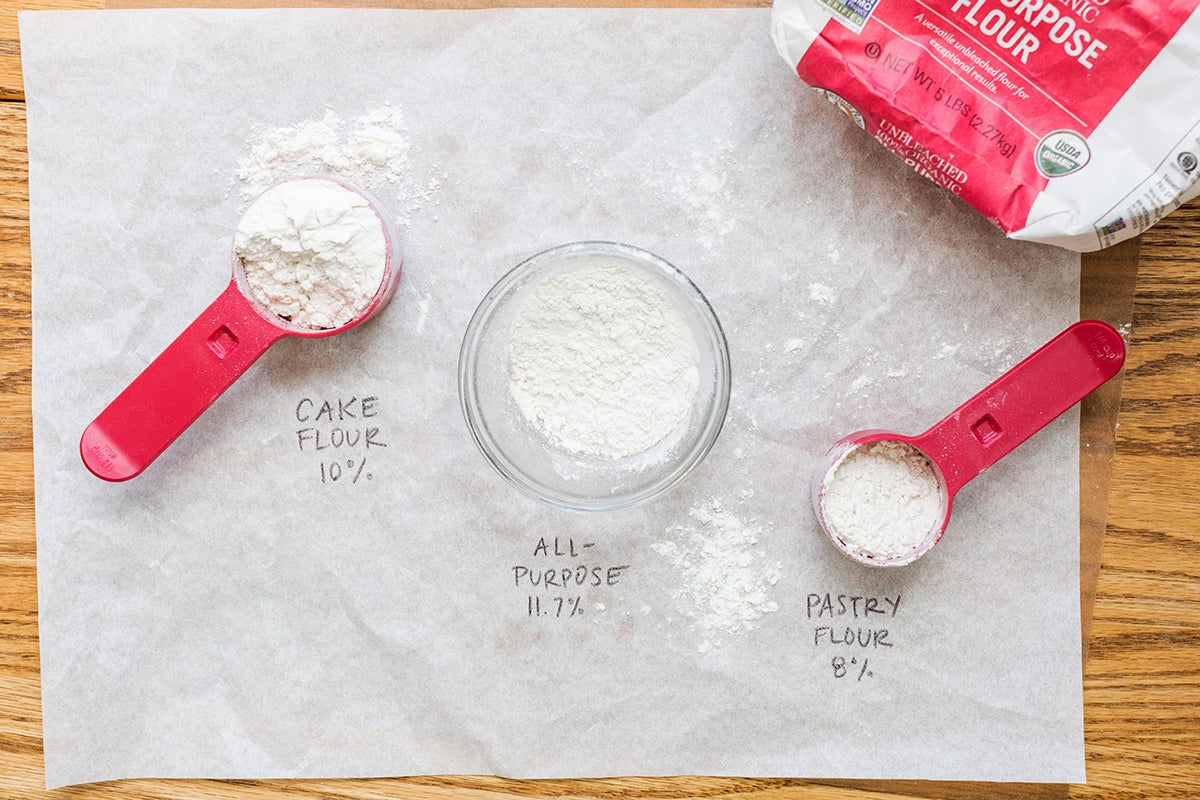
In this case, we’re aiming for the most delicate and dainty of pancakes possible. You might consider using King Arthur Cake Flour (10% protein) or even our Pastry Flour (8% protein). These lower-protein flours develop less gluten and produce an even more tender final product.
While it’s not necessary to use one of these specialty flours in order to make super-thin pancakes, it does give you an assist! So if they’re accessible to you, give them a try and see what superb results you get.
And for the gluten-free bakers out there? Simply use our Gluten-Free Measure for Measure Flour in place of the all-purpose flour in the recipe. No other changes need to be made.
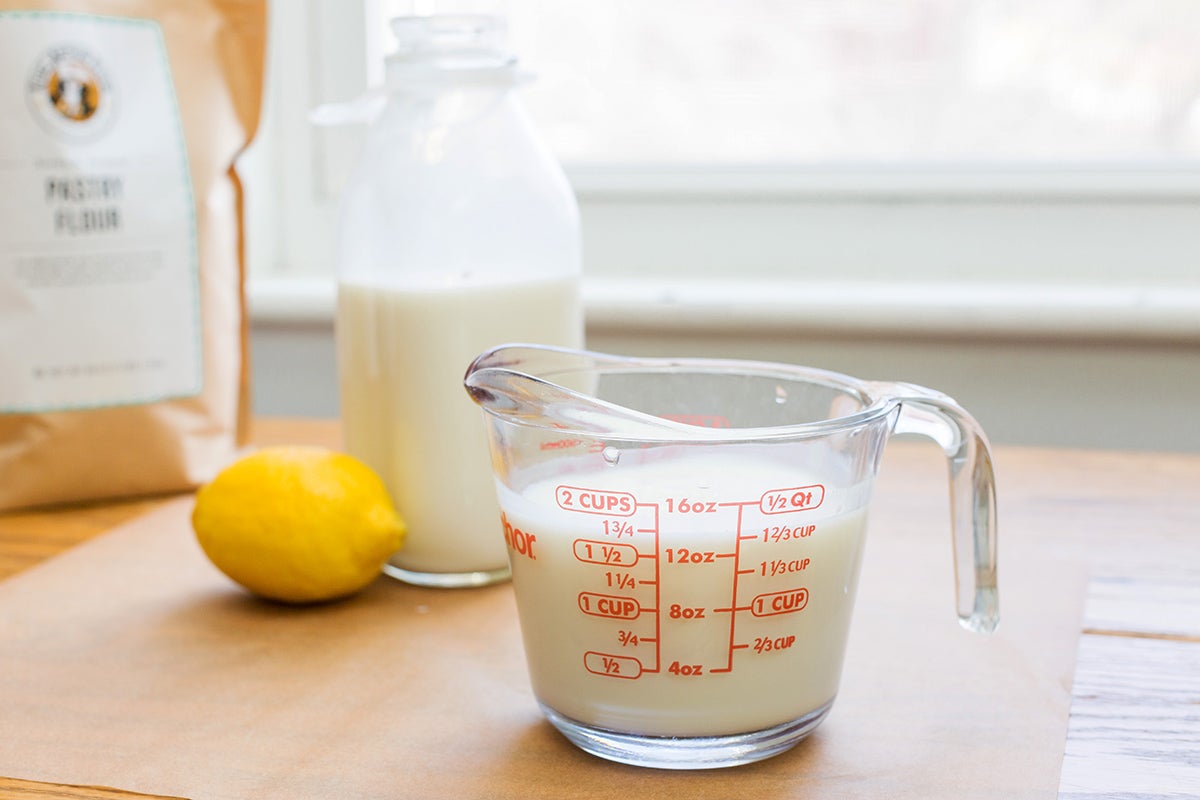
Once you’ve chosen your flour, you’ll need to create the perfect balance of liquid to flour. The original recipe calls for 2 cups (454g) of buttermilk and 2 cups (241g) of flour. We want to use even more liquid so the flour can fully hydrate and the pancakes will be the right thickness.
Increase the amount of liquid in your recipe until there's 1 3/4 cups of buttermilk (or milk) for every cup of flour.
If you prefer to bake by weight, use about 100g of liquid for every 30g of flour in your recipe. (You also can multiply the weight of your flour by 3.3 to get the approximate liquid weight.)
If you use buttermilk, this ratio will produce a batter that's pourable but not too thin. (A whisk will leave trails in the batter as it's stirred.) Buttermilk is usually thicker than regular milk, so if you use these ratios with regular milk, expect your batter to be quite thin. Not to worry — this will make your thin pancakes extra tender and delicate.
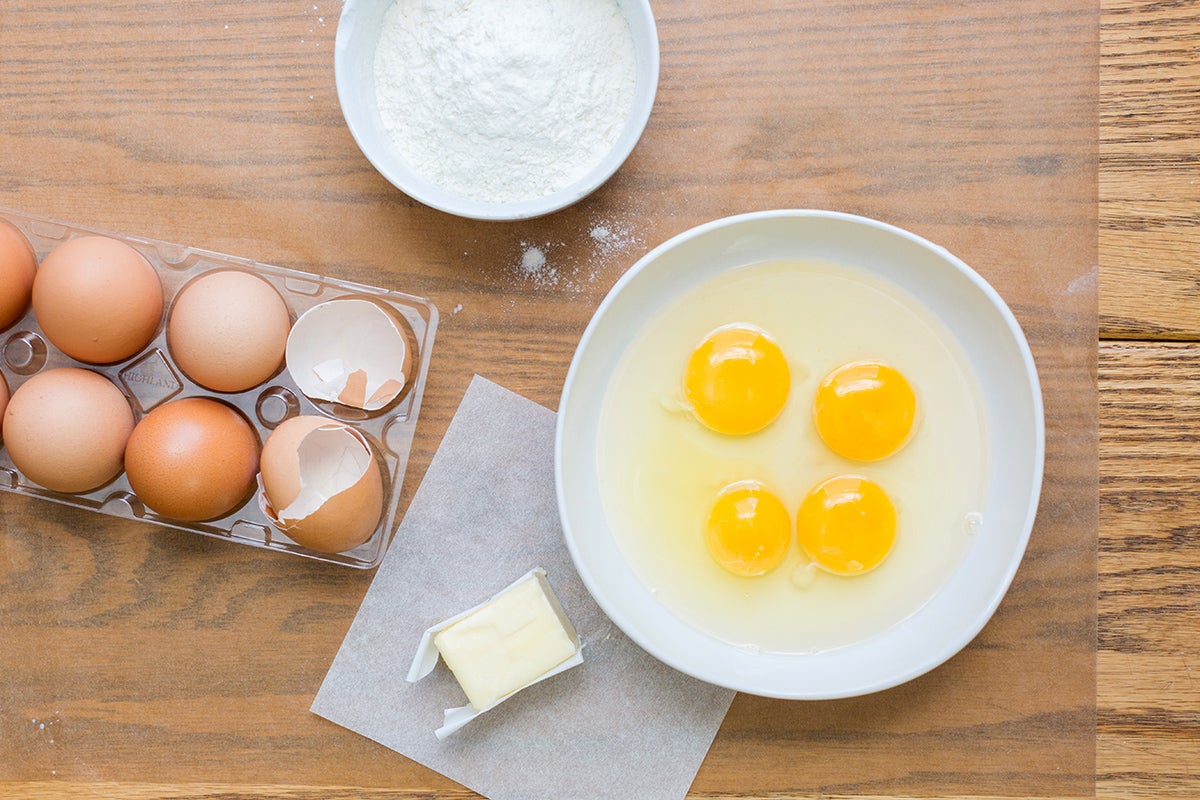
Thin, crêpe-like pancakes usually contain more eggs than traditional pancake batter. This turns the batter a beautiful golden color and adds rich, eggy flavor.
Beyond appearance and taste, eggs are also key to thin pancakes’ structure. With such a high ratio of liquid to flour, you need something to hold the pancake together. This is where the eggs come in.
As the eggs cook, the proteins set and create a structure that’s still somewhat flexible. This makes the final pancakes a delight to eat. They cut easily with just the side of your fork and can be folded or rolled as you please.
So more eggs = more extensible, thin pancakes.
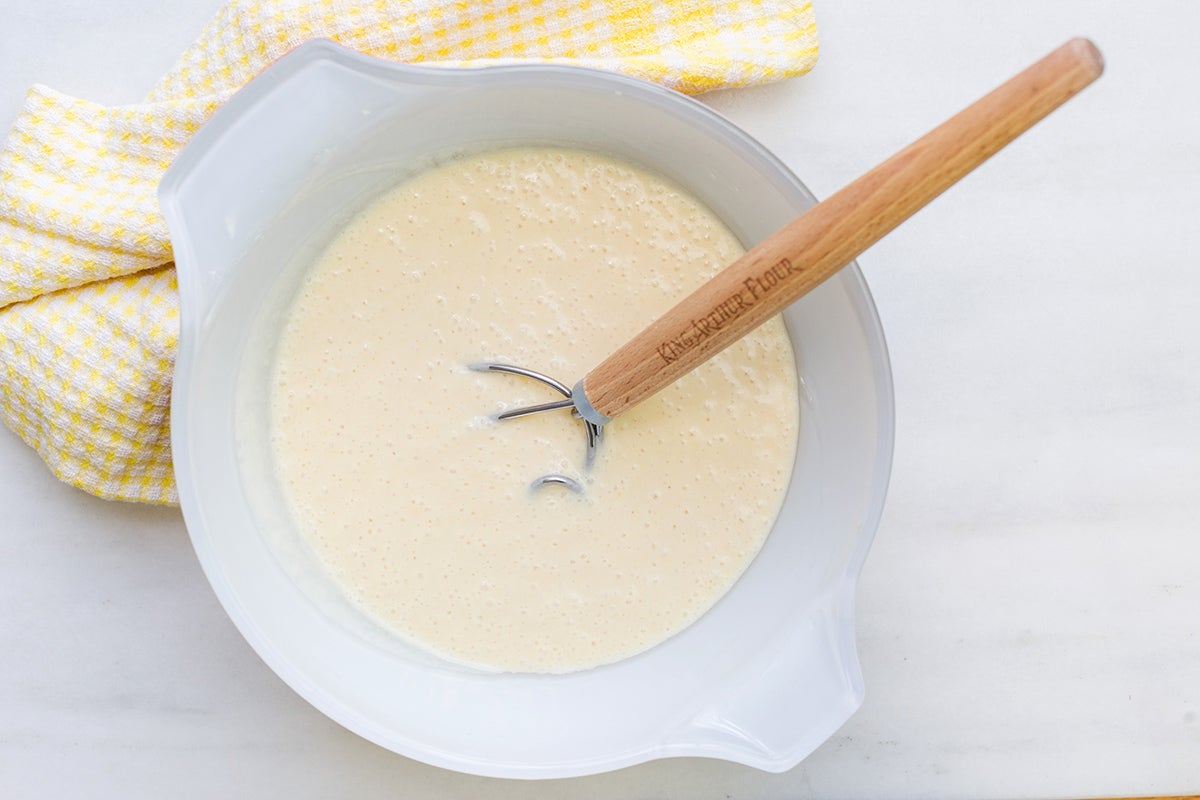
The ideal ratio of eggs to flour for thin pancakes is 2 eggs per cup of flour. For our Buttermilk Pancakes recipe, this brings us to a total of 4 large eggs for a full batch of pancakes.
The last adjustment you’ll want to make to your batter is in the fat you use. We’re going to take the lead from traditional crêpe recipes and use melted butter in our thin pancake batter.
The original Buttermilk Pancakes recipe offers the option to use either melted butter or vegetable oil. The latter is a great choice when making waffles. Oil imparts a slightly crispy texture around the edges.
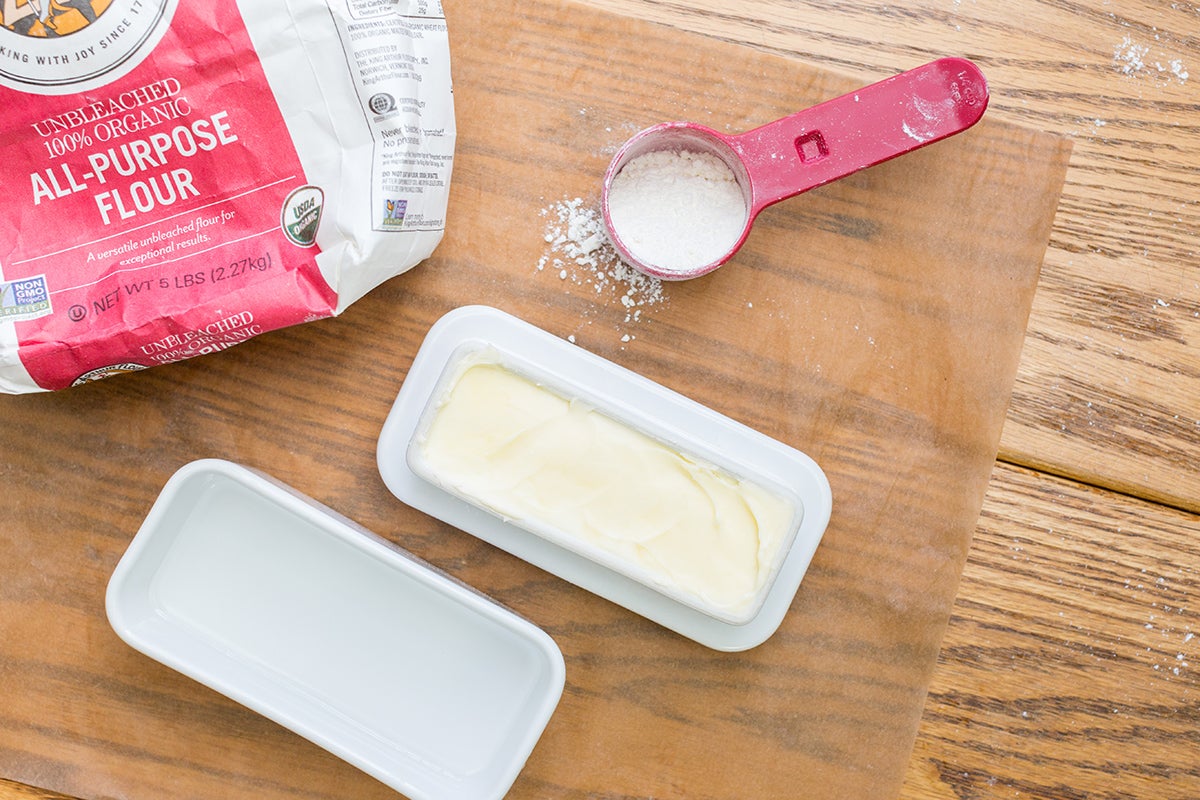
But we’re not looking for crispiness here – we’re looking for tenderness, so opt for melted butter instead. Use the amount of fat that’s called for in your original recipe – opting for melted butter instead of oil.
Now that you've chosen the right ingredients and you know the exact ratios to use, it's time to mix up your batter and get cooking.
You might have heard about a classic pancake mistake that leads to flat, rubbery pancakes: overmixing the batter. Typically, we recommend stirring the batter gently until just a few lumps remain. The less mixing, the more tender the final pancakes.
However, in the case of our thin pancakes, the high ratio of liquid to flour makes it more likely that the flour will clump. You'll need to mix the batter more vigorously than you would standard pancake batter to make the consistency relatively smooth.
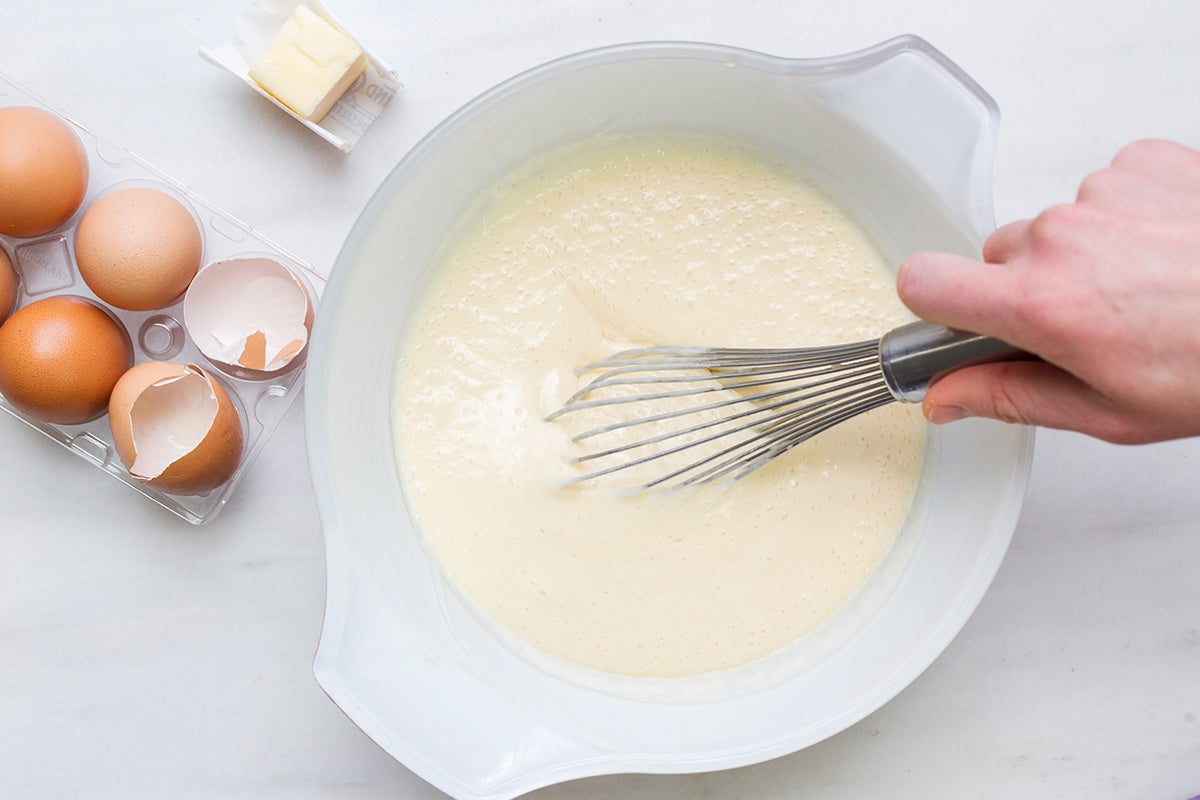
If some stubborn lumps remain — which might happen if you're using Cake Flour because the wheat starch in the blend is likely to clump — you can always blitz the batter in a blender. (These lumps will otherwise stick up like little mountains in the middle of your thin pancakes.)
To counteract the mixing, let the batter rest for at least 15 minutes before using. This pause allows the gluten to relax, ensuring a tender texture. If the idea of tacking extra time onto your pancake-making process isn't appealing (perhaps you've got some hungry kids waiting), consider making the batter the night before.
If you follow this make-ahead step, cover the batter and place it in the fridge overnight. Your thin pancakes will be a cinch to make the next morning.
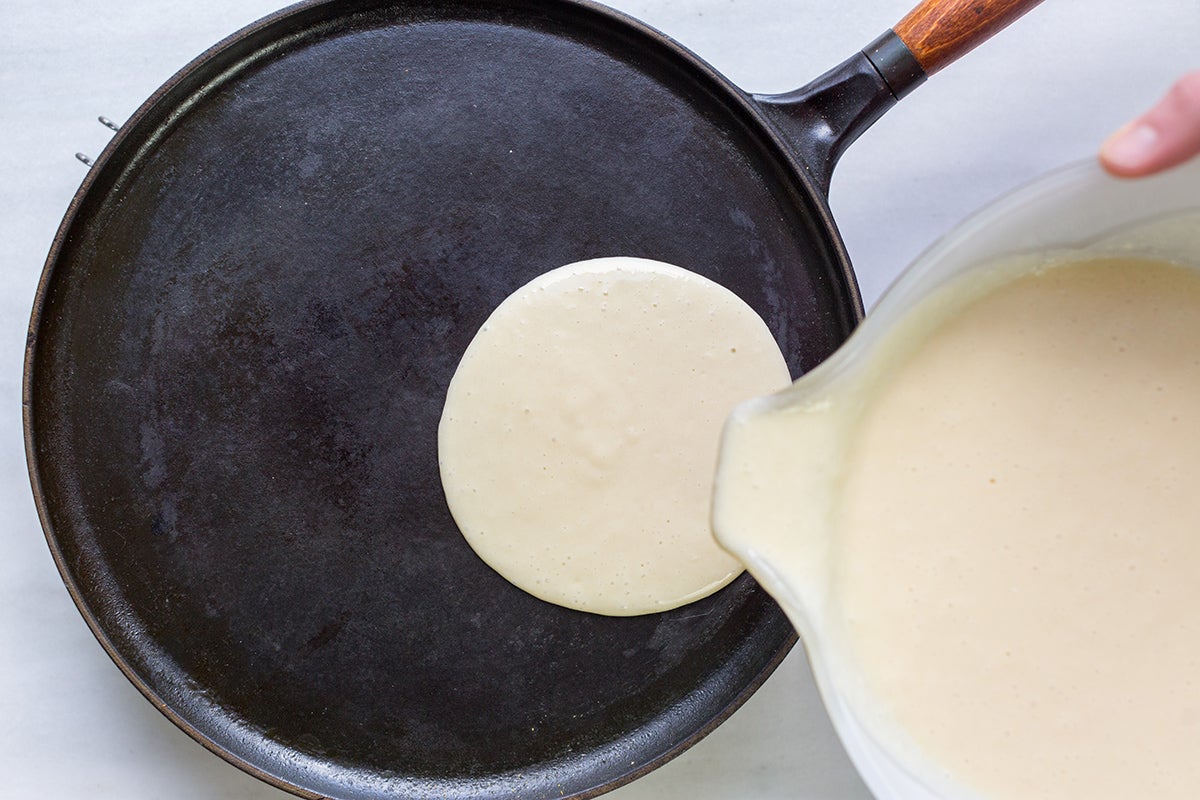
Once you're ready to cook your pancakes, start by preparing your pan. If you have a crêpe pan and you’re excited to use it, more power to you! If the idea of another specialty pan gives you a headache, you can breathe easy. Use a regular electric griddle, skillet, or even a cast iron pan to cook your thin pancakes.
Preheat your pan of choice over medium heat (about 350°F if you’re using an electric griddle) and grease it lightly. Use pan spray, butter, or oil — your choice. Turn the heat down just slightly (325°F) before portioning out the batter.
The amount of batter to use for each pancake will depend on how large you want the final pancakes to be. If you want to make large pancakes, (about 6" to 7" in diameter), use about 1/3 cup of batter per pancake.
Remember that the batter will spread quite readily, so you may only be able to cook one pancake at a time if you use more than 1/3 cup of batter. (I can cook three large pancakes of this size at a time on my electric griddle.) If you want to speed things up and cook multiple pancakes at once, use a scant 1/4 cup of batter per pancake.
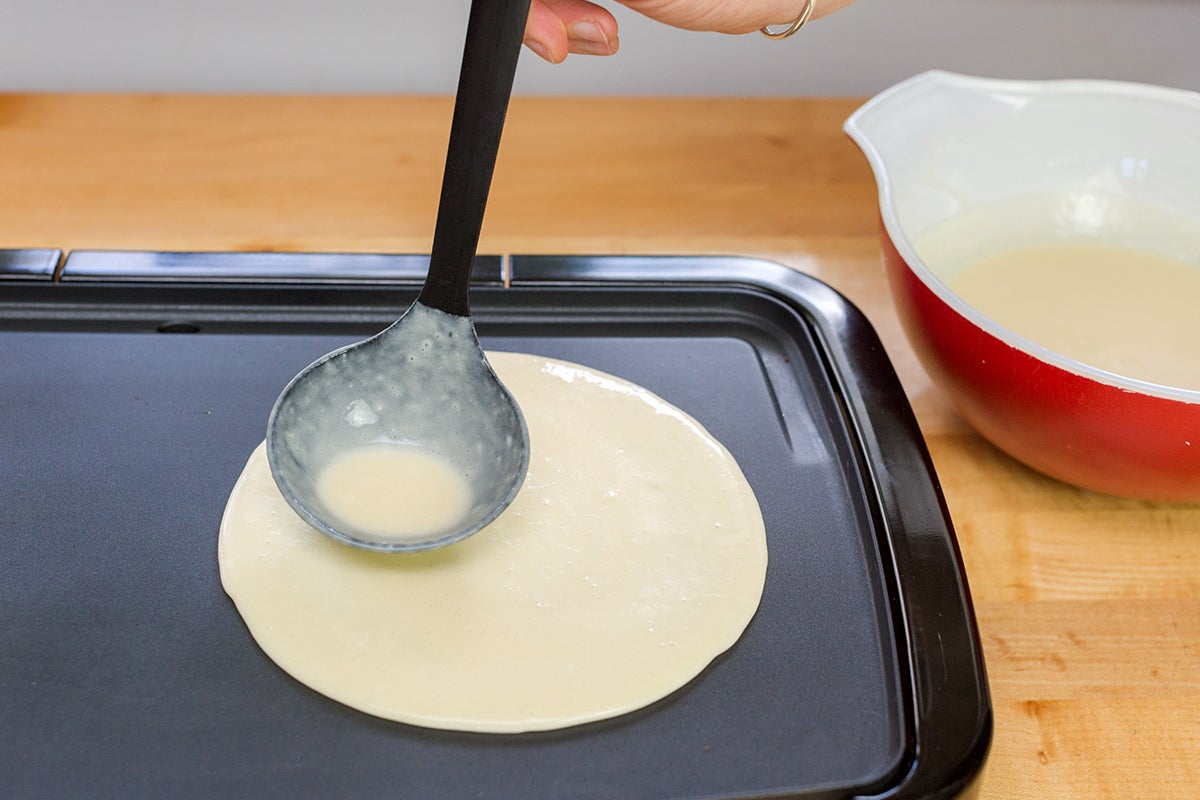
The best tool for spooning out this thin pancake batter? A ladle. Alternately, you can use a muffin scoop or simply pour the batter from a large measuring cup.
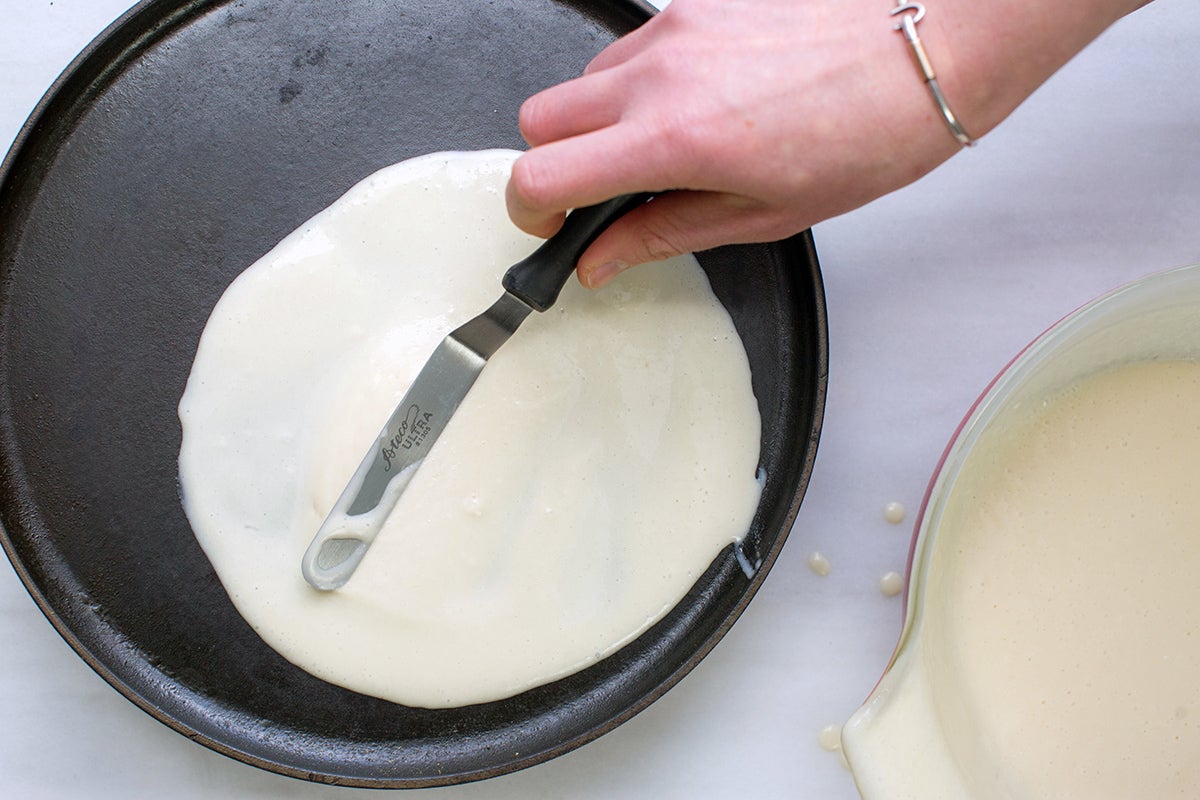
At crêperies, sometimes you'll see crêpe-makers use a spreader or spatula to thinly and evenly distribute the batter. If you have one of these tools, fantastic! Use it. If you don't, you can use the back of the ladle or an offset spatula, moving in a circular motion and encouraging the batter outwards until your pancake batter is about 1/4" thick.
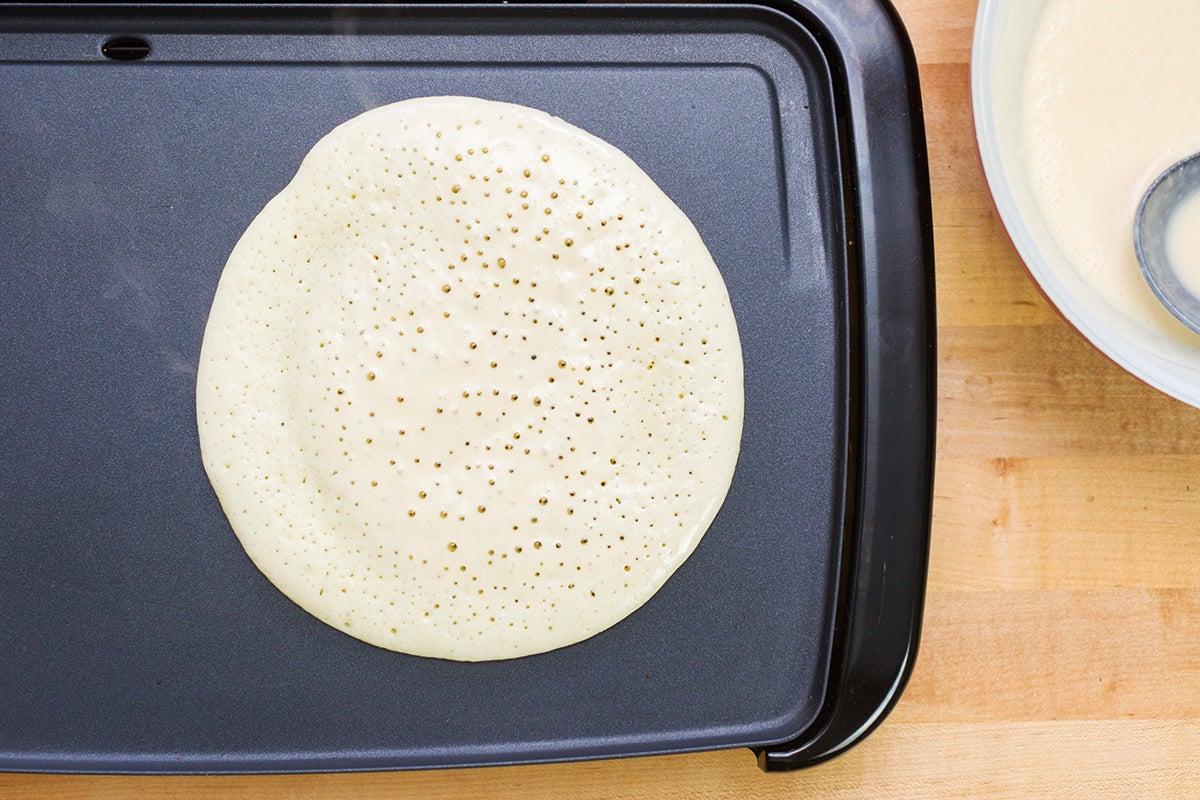
Your thin pancakes will cook quickly. As soon as you start to see the edges brown and lots of little pinholes appear on the top, they're ready to be flipped.
Use the largest spatula you have to make flipping easy. (A giant spatula is ideal!)
The pancakes are done when there’s no more steam coming from the underside. After they've been flipped, it'll probably only take 30 more seconds to finish cooking. And your kitchen should smell amazing – that’s a telltale sign that it’s time to eat!
No one will judge you if you eat these delicious pancakes straight from the pan with nothing but your fingers.
Or, if you’d like to take things up a level with the presentation of your thin pancakes, here are three ideas that range from comforting to classy.
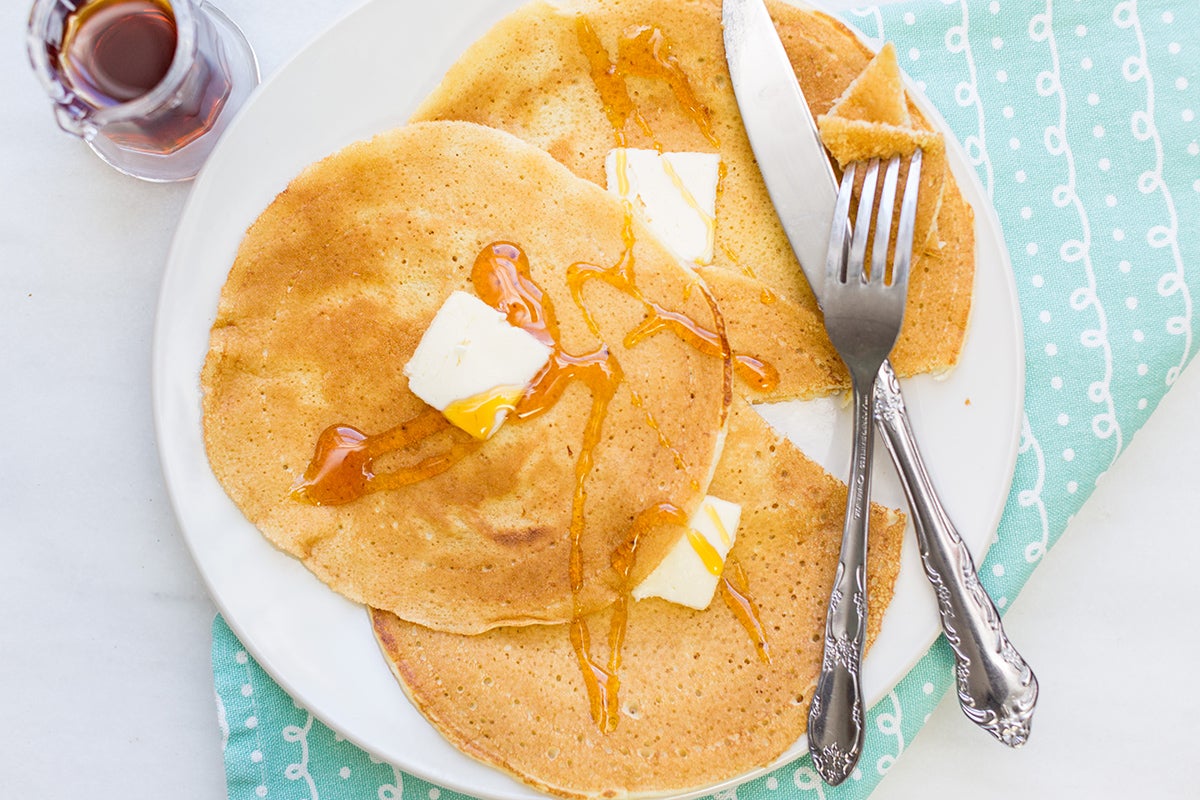
One notch above eating pancakes straight from the pan is serving them like classic homestyle pancakes. This means plating up the pancakes so you can see each one; you want each cake to have the maximum surface area for soaking up delicious toppings.
Cut pats of (salted!) butter and spread them across each pancake. Drizzle warm maple syrup over the top, being generous with the liquid gold. (Warming the syrup beforehand is key: It keeps the butter soft and melted, and the whole dish just turns into one warm, cozy pillow of breakfast heaven.)
This style of serving is simple and straightforward — but because you tweaked the batter to make thin pancakes, they’ll still feel special.
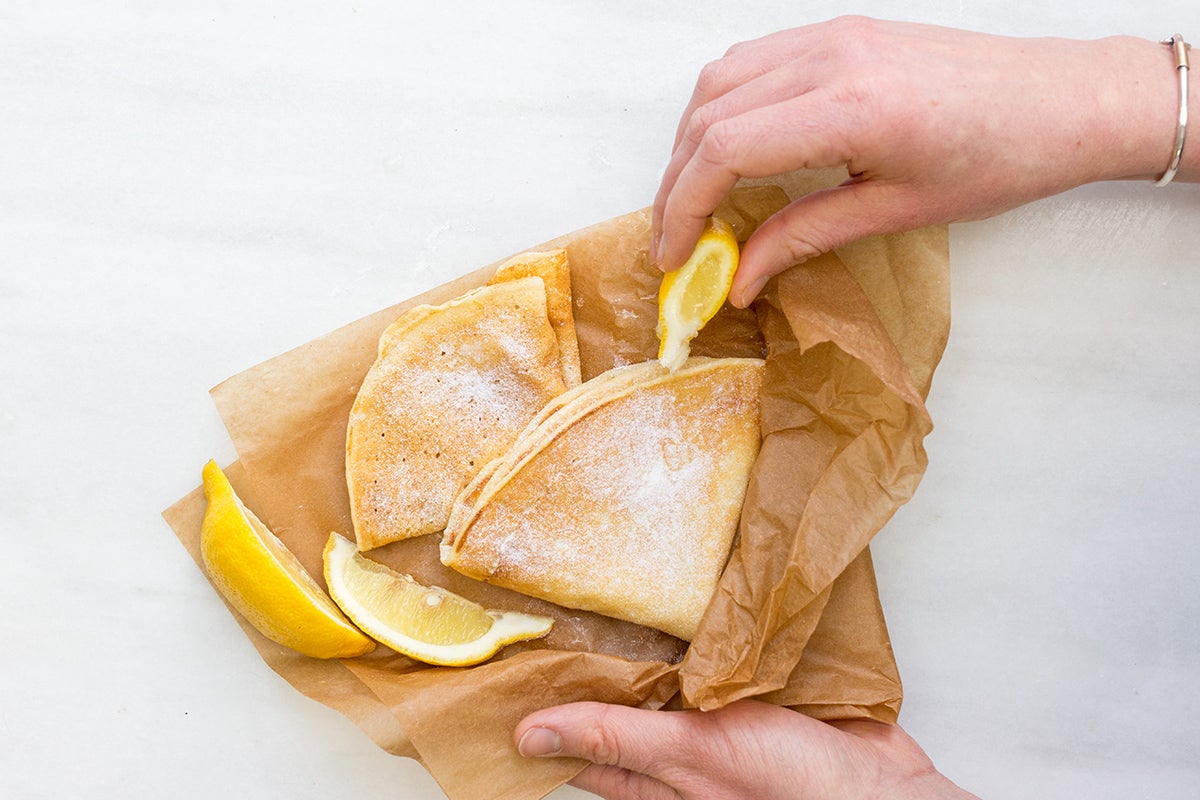
If you really want to lean into the crêpe vibe, serve your thin pancakes like, well, crêpes! Traditionally, large crêpes (sometimes those that are 12” or more) are folded into quarters before being served.
Top with a variety of garnishes ranging from basic (powdered sugar and lemon juice, or a smear of Nutella) to complex (berries, mascarpone, chocolate sauce, and more).
You can even wrap your crêpe-like pancakes up in a piece of parchment paper if you’d like to feel like you’re on the streets of Paris.
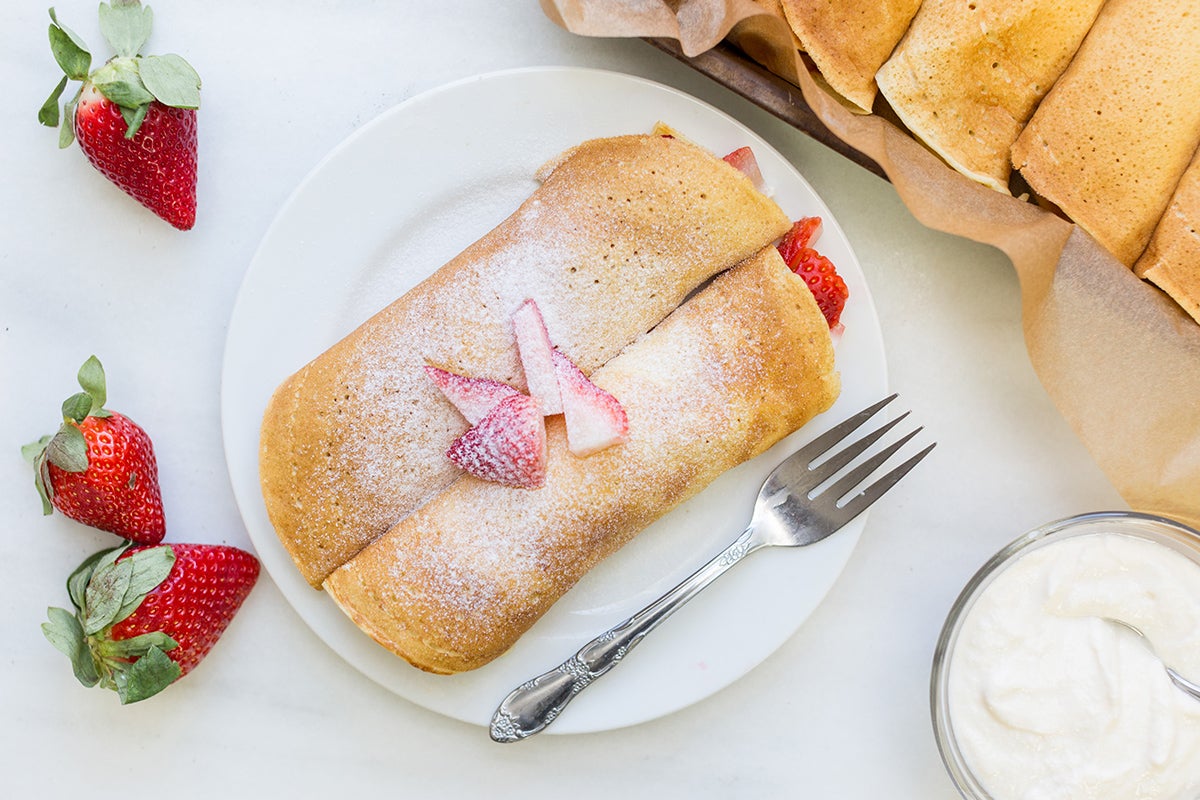
Another option for serving your thin pancakes (and my personal favorite) is to present them as Cheese Blintzes. While this might sound like a savory dish, it’s perfectly sweet and just right for breakfast (think cheese Danish).
Borrow the traditional filling from our Cheese Blintzes recipe. Use a combination of farmer’s cheese (or cottage cheese) and ricotta to make the creamy filling.
Note: If you use the traditional filling, you’ll need to bake the filled pancakes in a 9” x 13” pan for about 25 to 30 minutes in a 350*F oven, until they’re thoroughly heated; the traditional filling contains an egg.
No time for fancy filling? Make the quick version by mixing 1 1/2 cups (340g) ricotta with 1/2 cup (113g) sour cream (or plain Greek yogurt), 2 teaspoon vanilla extract, 3 tablespoons light brown sugar and 1/4 teaspoon salt. No baking needed!
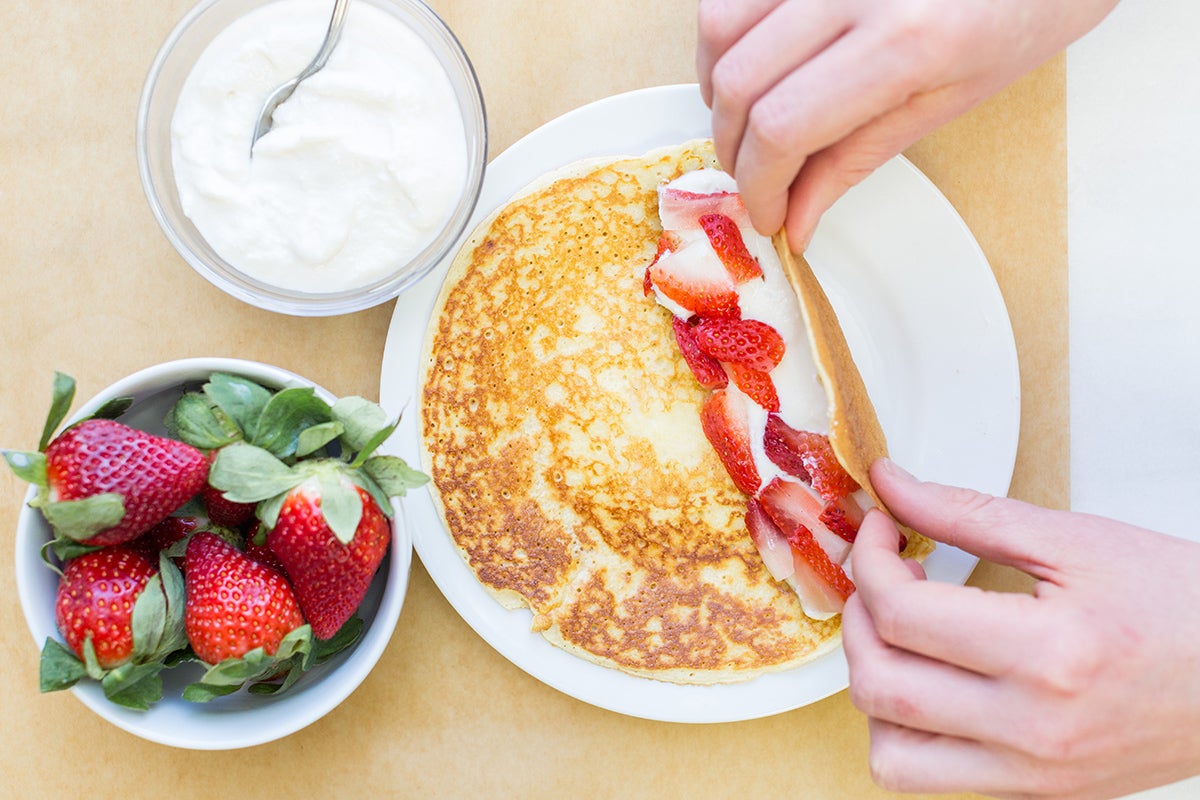
Using either filling, spread a 1”-wide strip of cheese filling down the center of each pancake, then roll them up to encase the filling. I like to sprinkle some chopped or sliced fruit on top of the cream for extra flavor and color. Dust with Snow White Non-Melting Sugar or confectioners' sugar for extra pizazz!
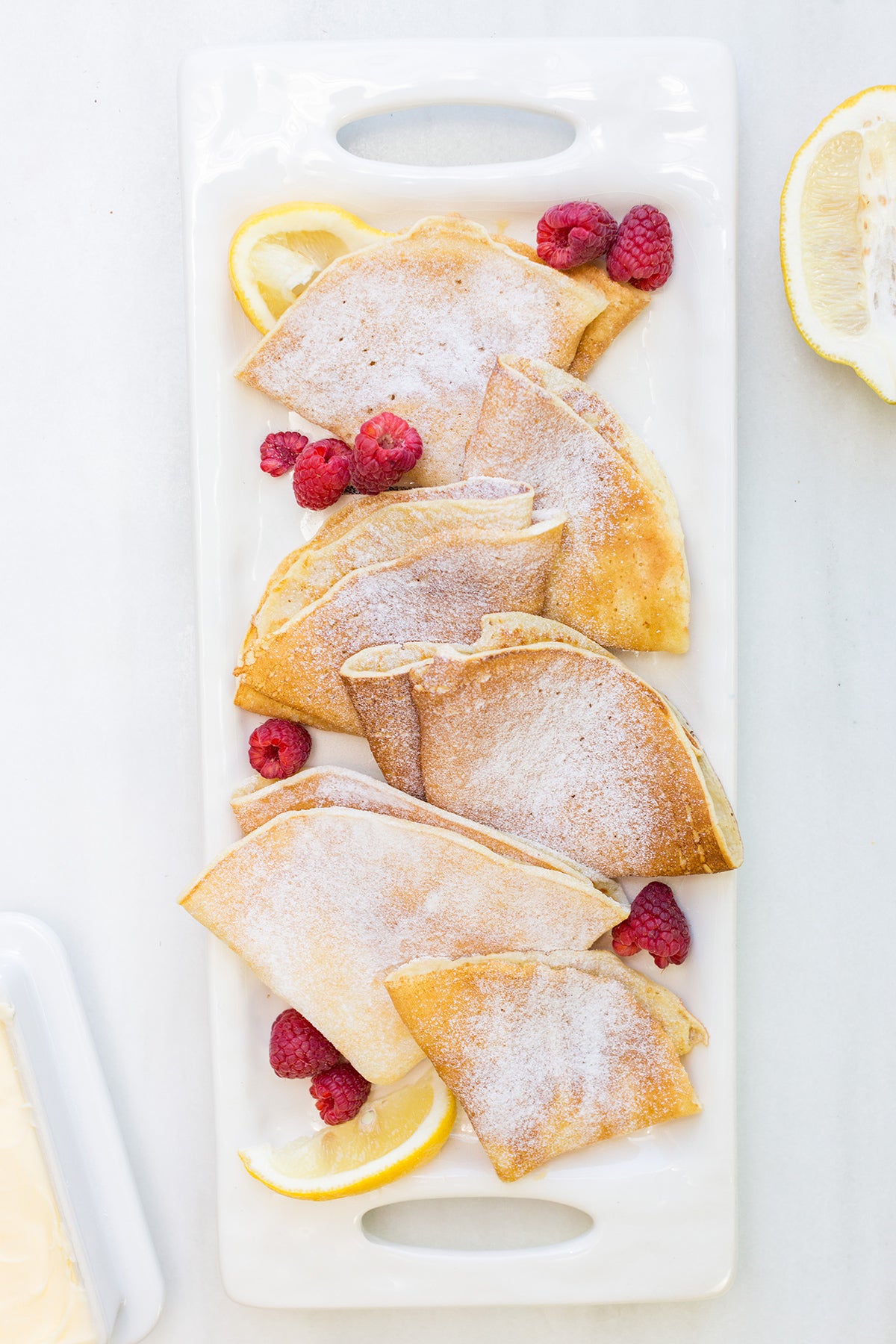
You haven't truly experienced breakfast bliss until you have delicate, thin pancakes on a weekday morning. By all means, enjoy them on weekends too — but these tips are so easy, you'll be making these pancakes on Mondays without thinking twice.
Top your thin pancakes with butter and warm syrup, fold and add fresh lemon juice, or roll and stuff with berries and cream. Any way you garnish your thin pancakes, you'll be serving up plates that are sure to impress.
Find even more pancake inspiration in our personalized pancakes series. Let us know which version you like best in the comments, below.
Thanks to Anne Mientka for taking the photographs for this post.